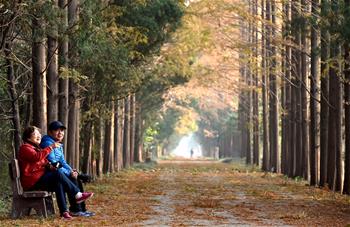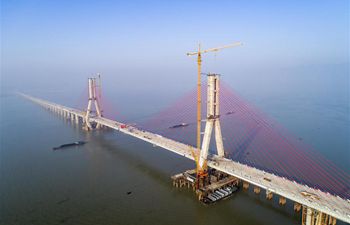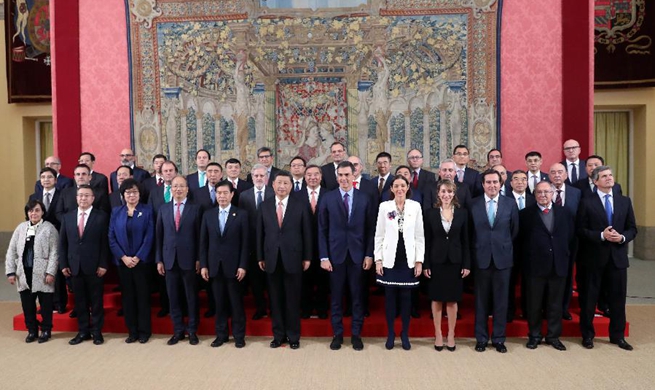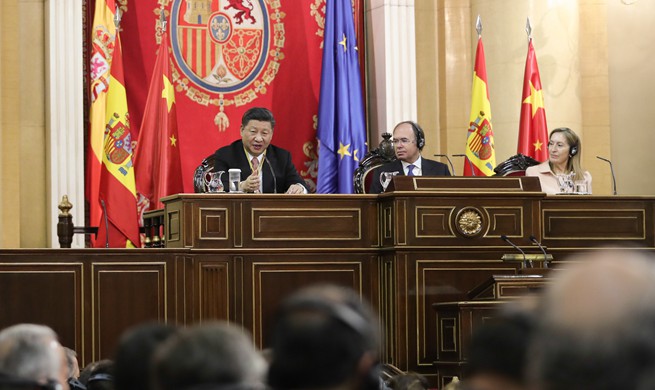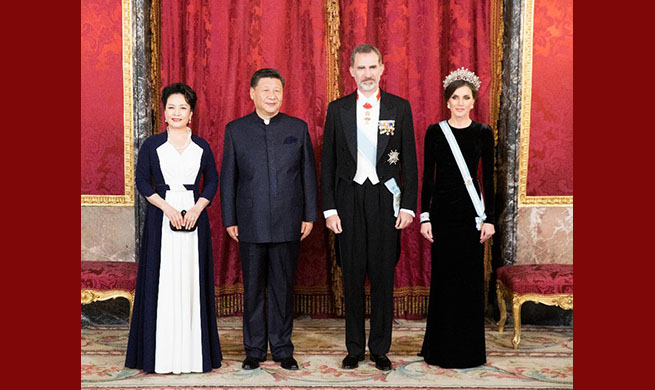SINGAPORE, Nov. 29 (Xinhua) -- For land-scarce cities like Singapore, developing underground spaces is the next big frontier in urban planning, experts said here Thursday during a lecture on underground at the Ministry of National Development.
With forward-thinking planning through an integrated, comprehensive underground masterplan, technological innovation and a dose of "imagination," this problem of land shortage can be overcome, Yong Kwet Yew, professor of civil engineering at the National University of Singapore, said during the lecture "Uncovering the Underground."
Currently, such spaces tend to be reserved for transport, though spaces for other infrastructure, logistics and research can be shifted underground, freeing more surface land for housing and recreation.
Yong painted his vision of a green Singapore 50 years on - a car-lite system which uses shared autonomous vehicles, underground cities and towns where Singaporeans can escape from the hot weather and rain and where urban farms flourish below ground.
There can be capsule transport of heavy cargo through the pipelines. Storm water and canals can be integrated in an underground system, while heavy industries or treatment plants that cause noise, air or odor pollution can be installed underground as well.
Pointing that technological advancements like 3D planning have made it easier to visualize as compared to 10 to 15 years ago, panelist and engineering and design company Arup's senior engineer Peter Stones said Singapore is at "an opportune moment to handle the complexity of underground space use."
Going ahead, Yong said new legal and planning frameworks can pave the way for more underground development and urged developers not to be deterred by hefty construction and maintenance costs.
"The public sector must see the higher costs as a trade-off between a higher quality of life, if we put things underground, and for the private sector, issues such as development charge must be addressed," he said. Noting that while technical constraints in underground construction are not "insurmountable," Yong highlighted the need to design for "permanency, or to have a high degree of flexibility," as once such spaces are built, it is hard to re-develop them.
There is also the tricky issue of weighing the economic benefits and the "intangible" and strategic benefits, such as whether to pump in costly resources for more urban farms to ensure Singapore is self-sufficient, said panelist Adele Tan, Urban Redevelopment Authority's Group Director of Strategic Planning.
Beyond worries about the physical age of infrastructure, there are also new technological developments that Singapore can watch out for.
"It's lucky that we are at this timeline where we can still learn from other countries who are a little bit ahead in terms of engineering structure... to learn their best practices and to keep up with the game," Stones added.




